Embryology Of The Gastrointestinal System
Article Sections
Introduction
The embryonic stage of development (ie, weeks 3-8 of gestation) is a critical time for organogenesis (Figure 1). Gastrulation marks the beginning of the embryonic stage of development and establishes the 3 primary germ layers (trilaminar disk) from which all tissues and organs are derived: ectoderm, mesoderm, and endoderm (Figure 2).
Components of the gastrointestinal (GI) system are derived from each of these germ layers (Table 1), as follows:
- Endoderm: Gives rise to the epithelial lining of the GI tract (from the pharynx cranially to the rectum caudally), liver, and pancreas.
- Mesoderm: Gives rise to the connective tissue, smooth muscle, and blood vessels of the GI tract as well as the peritoneum and spleen.
- Ectoderm: Gives rise to the epithelial lining of the oral cavity and salivary glands. The neural crest is derived from ectoderm and gives rise to neural ganglia, including enteric ganglion cells. Failure of neural crest cell migration results in Hirschsprung disease, a condition in which the aganglionic sigmoid colon/rectum causes functional obstruction (
Continue Learning with UWorld
Get the full Embryology Of The Gastrointestinal System article plus rich visuals, real-world cases, and in-depth insights from medical experts, all available through the UWorld Medical Library.
Figures
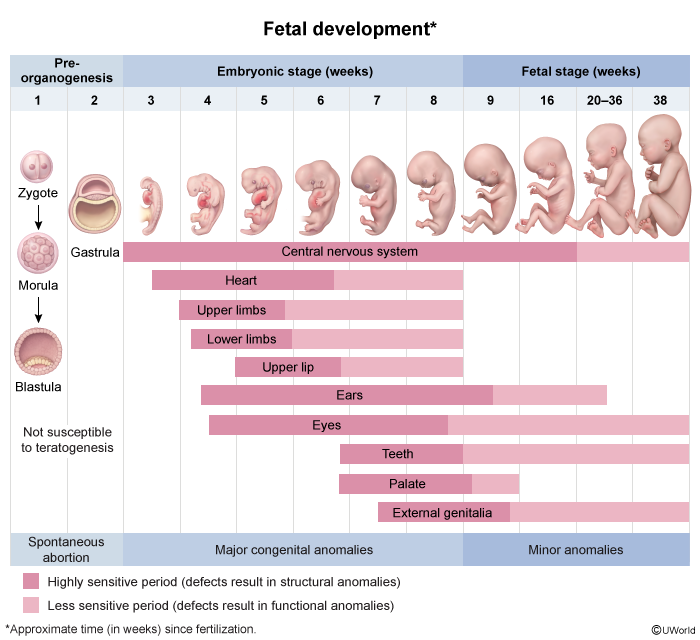
Figure 1
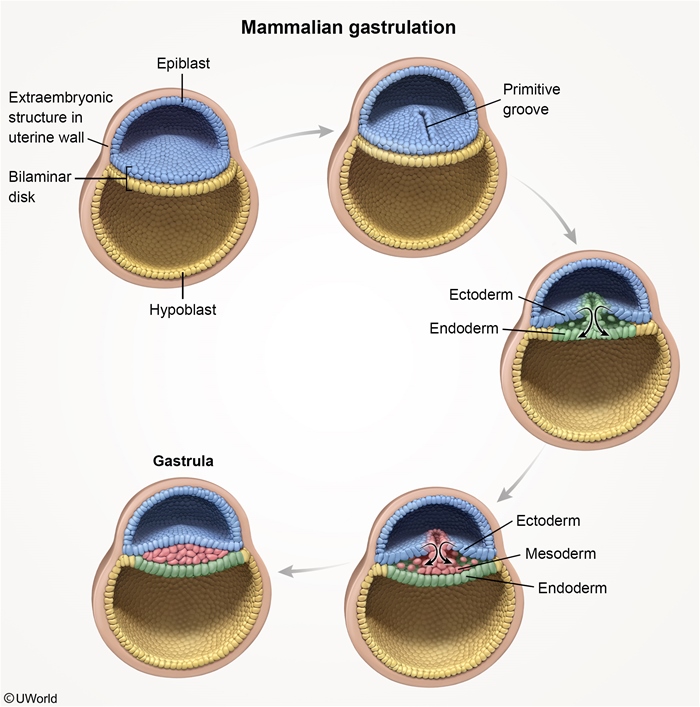
Figure 2
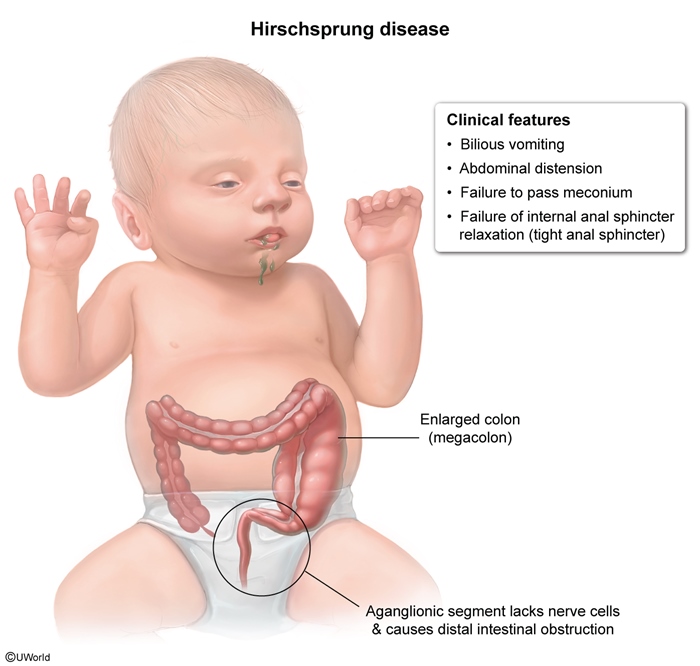
Figure 3
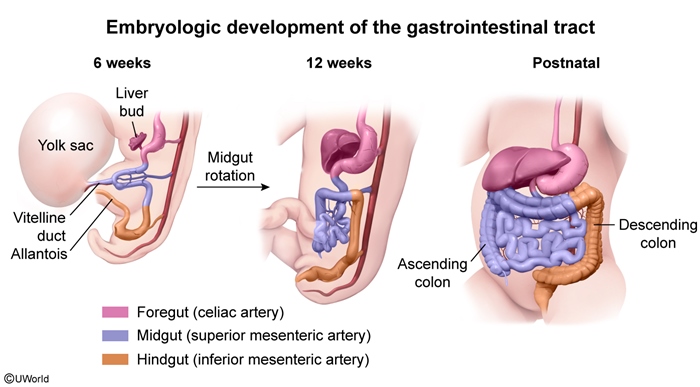
Figure 4
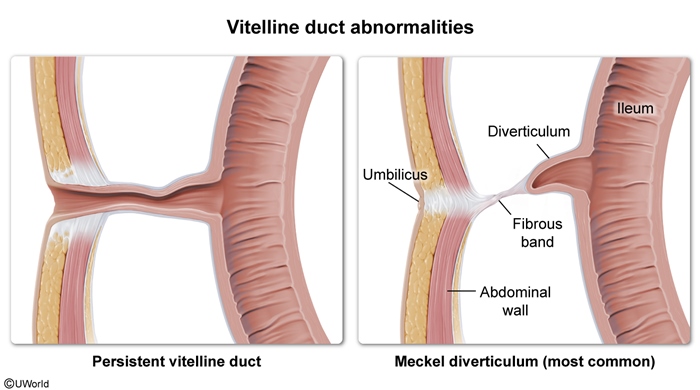
Figure 5
Tables
Table 1